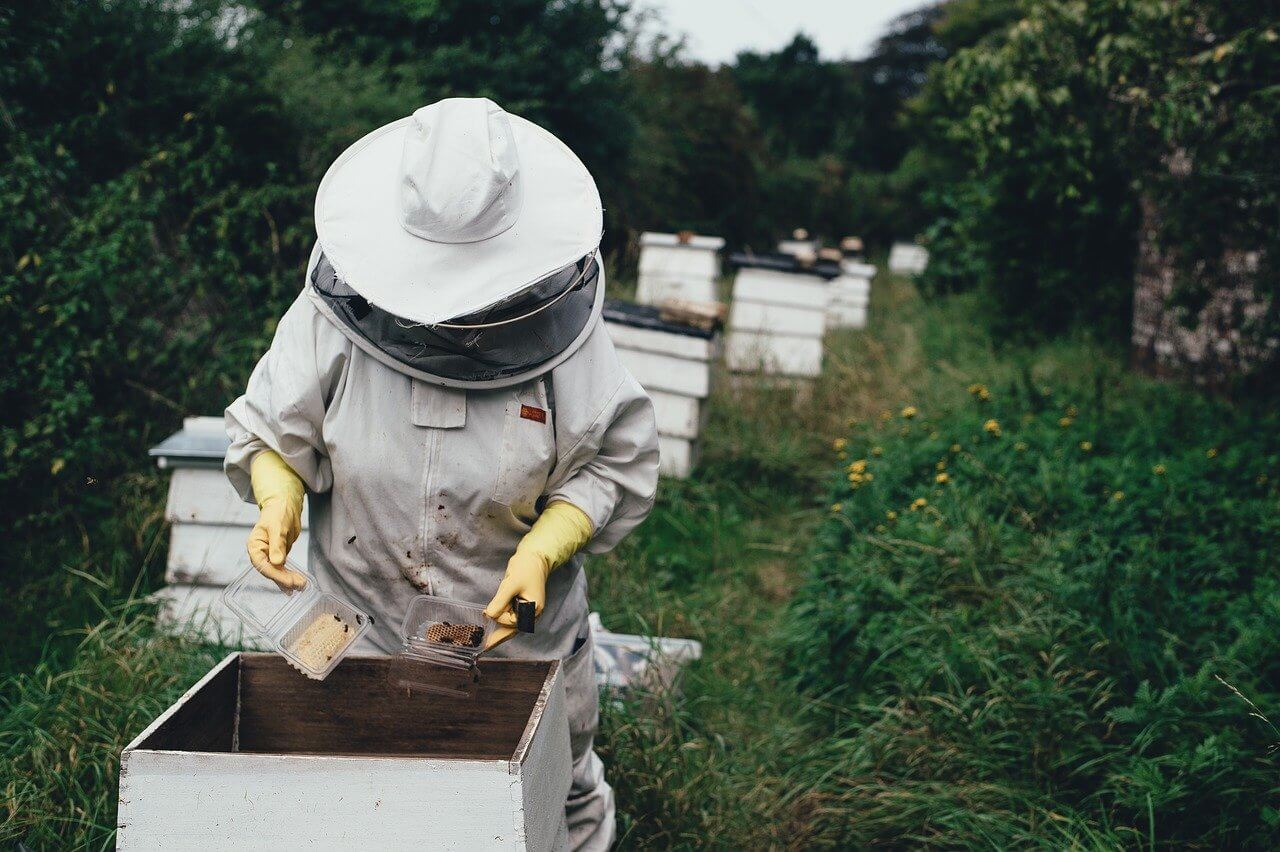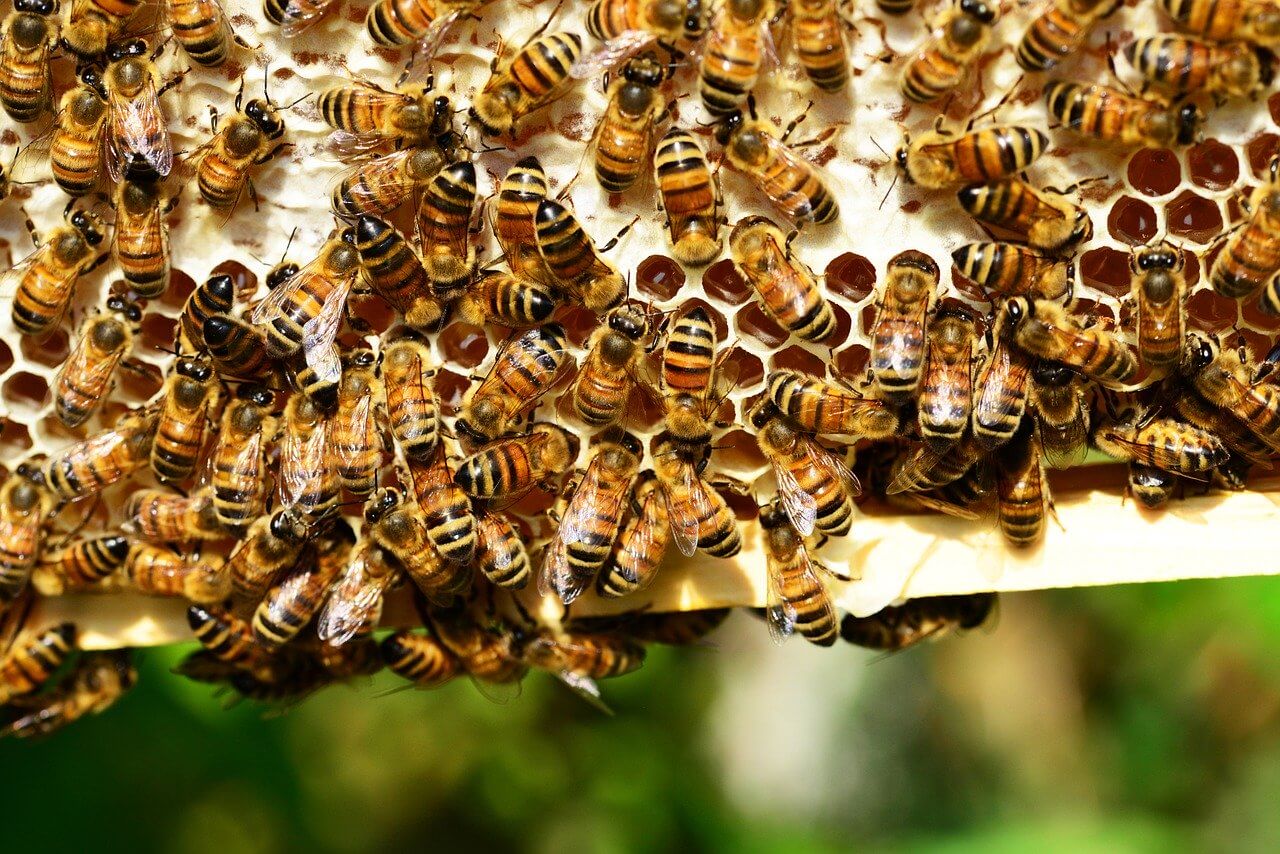A nuc box is like a starter box for a new bee colony. It is typically a small hive with between three and five frames. You should start out with a mated, accepted queen and at least three frames that are already filled with honey and brood and are fully drawn out. In this article, we discuss when to move bees from nuc to hive & also what time of day are bees most active. Read on to learn more.
What You'll Learn Today
- How Do You Transfer Bees From A Nuc Box To A Hive?
- Transfer Frames Carefully
- What Time Of Day Are Bees Most Active?
- Different Bee Species Are Active At Different Times of Day and Night
- Different Types of Plants Cause Different Levels of Activity
- Spring and Summer Are Bee Season
- Extreme Weather Conditions May Reduce Bee Activity
- Pollution Slows Bees Down
- Frequently Asked Questions
- Q: What equipment should you have on hand to install a package of honey bees?
- Q: Why should you check the package for cracks or tears and inspect the bees before you begin your installation?
- Q: Should you install your package of bees as soon as you receive it?
- Q: How can you get the bees to move from the package to the Nuc or hive?
- Q: How can you keep your new bees from leaving?
How Do You Transfer Bees From A Nuc Box To A Hive?

Naturally, this small hive can’t house your newly purchased or captured colony for very long, but it can give you a place to keep your new colony while you set up a permanent hive for them. This is particularly true for bees transported long distance.
The nuc box gives them a chance to get used to their surroundings. You can transfer them to their permanent hive once they have settled into their new location altogether.
So how to start?
Begin by getting the permanent hive completely ready for the bees. Choose the hive location carefully because unnecessary moving of beehives is quite undesirable.
To transfer the bees from the nuc box to the hive, you can simply set nuc the box on top of the hive and open up its entrances. The bees will begin orienting themselves to the new location right away.
You’ll see them flying in clusters in front of the hive, familiarizing themselves with its location in relation to the sun and landmarks. They may also begin collecting nectar and pollen right away.
You may be tempted to transfer the frames from the nuc box very quickly, but wait at least a full day before doing so. A full week is even better.
Transfer Frames Carefully
When you’re ready to transfer the frames, follow these steps:
- Suit up in your beekeeper regalia.
- Prepare and light your smoker (or use some other alternatives).
- Puff smoke around the nuc box entrance.
- Open the box lid and puff smoke into the top as well.
- Remove the first frame from one side of the box and transfer it into a central slot in the hive body.
- Carefully remove the next frame and put it in place with exactly the same direction and orientation it has had in the nuc box. Repeat this step with each successive frame. They should stay in the same placement and order when moved from box to hive.
- Check to see if there are still bees inside the nuc box. If there are, shake them into the hive gently.
- You should now have all of the frames from the nuc box installed in the center of the hive. Fill in the sides completely with fresh frames.
- Double check the entrance reducer and set it to provide a smaller opening.
- Put the inner cover in place and set up any liquid feeding arrangement you may be using.
- Put the outer cover in place.
- Observe the bees activity daily for about a week and then perform a hive inspection to make sure all is well.
Installing A Nuc In Your Hive
What Time Of Day Are Bees Most Active?
Generally speaking, bees are most active in the mid-morning hours as this is the best time for them to gather pollen and have access to moisture on leaves and flowers in the form of dew, but bees’ activity is dependent on a lot of factors.
In addition to time of day, weather conditions, food availability, pollution levels and many other conditions determine how active bees will be at any given time of the day.
Different Bee Species Are Active At Different Times of Day and Night
Honeybees are the most common types of bees, and they are typically very active around mid-day when the sun is high. There are lots of other types of bees, though.
In fact, worldwide there are more than sixteen thousand species of bees. There are even Southeast Asian bees that are active in the nighttime.
Different Types of Plants Cause Different Levels of Activity
Bees are attracted to plants by color, scent and abundance of nectar. Naturally, areas filled with an abundance of colorful, sweet smelling flowers will attract a lot more bee activity than areas filled with non-flowering plants.
Spring and Summer Are Bee Season

Because they are insects and unable to regulate their body temperature, bees love the warmer weather.
You are much more likely to see very active bees during the warm, sunny days of the spring and summer than you are in the autumn. You are also much more likely to see very active bees in an open, sunny setting than in a shaded area.
Extreme Weather Conditions May Reduce Bee Activity
While bees do prefer bright, sunshiny weather, they are able to function in some extreme conditions.
Honeybees are able survive very low temperatures during the wintertime, and they may stay out collecting pollen late into the autumn, even after temperatures drop.
When this is the case, you’ll see fewer bees and they won’t be quite as zippy as they are during warmer weather.
Extremely high temperatures and very dry weather may also limit bee activity. Even though bees may dart about more quickly (and may be more aggressive) in very hot weather, they will limit the amount of time they spend outdoors looking for nectar during very hot, dry weather.
Under these conditions, you may only see them in the cooler, early morning hours.
Pollution Slows Bees Down

When the air is heavily polluted, the pollutants interact negatively with plants’ scent molecules. Bees depend on the scent of plants to find food.
When these scent molecules mix with pollutants, it interferes with the bees’ ability to find and harvest nectar and pollen. This results in failed pollination and collapsed bee colonies.
Diesel fuel exhaust has been found to be especially harmful to bees because the chemicals found in it (nitrogen dioxide and nitric oxide) mix with and alter the floral chemicals in flowers, thus making them unrecognizable to bees.
In areas where diesel pollution is high, bee activity will be slow, inefficient or non-existent.
Don’t inspect bees in the early morning. Quick inspection gets hasty when percolating bees get angry.
Frequently Asked Questions
Q: What equipment should you have on hand to install a package of honey bees?
A: Get these items ready in advance:
- One or more gallons of sugar syrup (mixed 50/50 with warm water) for feeding the new colony.
- Spray bottle with sugar syrup
- Protective gear
- Hive tool
- Bee veil
- Smoker
Get all of your equipment ready and in place before you start so you won’t have any awkward and potentially painful mishaps.
Q: Why should you check the package for cracks or tears and inspect the bees before you begin your installation?
A: Checking the package for damage and inspecting the bees is a smart way to be sure the bees you have ordered are strong and healthy and have been properly handled. It’s normal to find about an inch of dead bees in the bottom of the box after shipping, but if you find a large number of dead bees, it may mean that they were overheated during shipping. If this is the case, the survivors‘ health may be compromised. You should report damaged packaging to the provider right away, and you may need to request a replacement shipment.
Q: Should you install your package of bees as soon as you receive it?
A: No, after you pick up your package, you should place it in a cool, dark place to let the bees rest for several hours. Be sure to protect them from extreme temperatures (hot or cold), loud noises, or vibrations. While they are resting, spray the bees with sugar syrup from time to time. Use their rest time to be sure that all your hive equipment is ready for the installation.
Q: How can you get the bees to move from the package to the Nuc or hive?
A: Start by firmly knocking the package on the ground to make the bees drop to the bottom of the box. Be sure to hold the box lid in place while doing this. Quickly remove the panel from the package and turn the package upside down over the hive body. Vigorously shake the bees into the hive. Some may fly around but will eventually settle down and enter the hive.
Q: How can you keep your new bees from leaving?
A: Follow these steps:
- Be sure your new bees have plenty of sugar syrup in place to help them settle in quickly.
- Before installation, rub beeswax on the inside of hive boxes. This will give them an inviting scent and make them feel more comfortable for bees.
- Provide a frame of drawn comb (preferably dark) that has been treated with a pheromone that encourages bees to stay.
- Give the bees a frame of open brood containing both eggs and larva. This will greatly increase their desire to stay.
- Install bees during warm, predictable weather. Temperatures should be consistently above 65°F. Avoid windy and/or rainy days.
- Don’t rush the queen. Be patient and give her several days to make her way out of the queen cage naturally.
By taking these steps, you can encourage your new bees to stay in their new home.
This is a very well written and informative article. I am a first time bee keeper and really enjoyed ready and watching the videos. I live in Australia on the east coast but inland where it can get cold. I will be transferring my nuc into their new home during this week having had them in temporary accommodation for a week to acclimatise.
I look forward to reading more articles about bee husbandry.
Thank you Tim for your kind words. 🙂 I’m planning to publish a few new posts about beekeeping later this year.
Awesome article. It was to the point and simplified.